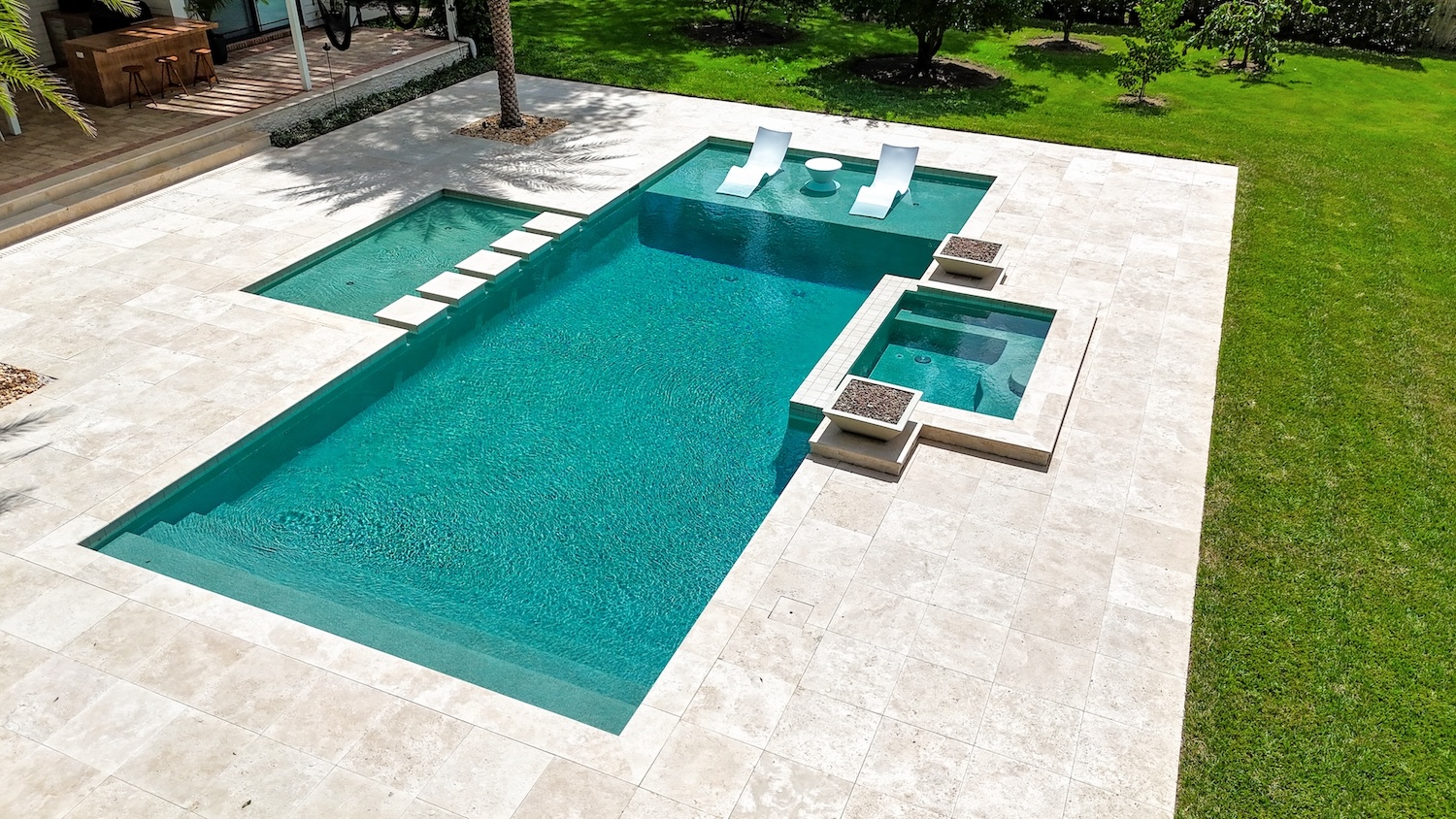When it comes to preparing for extreme weather, homeowners must take special care to protect one of their most valuable assets, including their pool. From floods and droughts to summer heat and winter weather, Mother Nature’s worst requires special attention to pool maintenance. With knowledge of weather threats and a bit of preparation, pool owners can protect their outdoor recreation areas and decrease the need for costly repairs. Read below for more information from Anthony & Sylvan and our inground pool experts:
Hurricanes
Hurricanes pose numerous risks to pools, from heavy rains and flooding to strong winds and damage by airborne storm debris. Despite the temptation felt by many pool owners, it is vitally important not to drain a pool in these circumstances. Not only will draining increase the chances that the interior sides and flooring are damaged in the storm, but in rare circumstances, a rising water table caused by flooding may actually “float” an inground pool. Several proactive steps that can be taken during a hurricane or period of intense rain include removing all freestanding objects and items such as pool toys from the vicinity, as well as turning off the power to electrical pool equipment.
Winter Weather
Freezing temperatures and powerful storms make winterizing an outdoor pool an absolute necessity. Temperatures dipping below the freezing point can cause the water in a pool’s plumbing, pumping and filtering systems to freeze and expand — breaking pipes and causing damage to vital equipment. Properly winterizing pool equipment, removing freestanding items from around the pool, lowering the water level and installing a cover are important steps to ensure that a pool is safe during the coldest months of the year and ready to be used again the following summer.
Intense Heat and Sunlight
While sweltering summer heat is a prime motivator that drives people to own and use pools, sustained heightened temperatures can also have a negative effect on the quality of pool water if not properly cared for. Intense heat and high levels of sunlight can encourage the growth of algae and other microorganisms. Nevertheless, preventing the development of algal blooms is quite simple. Maintaining recommended chlorine levels at all times and ensuring that filter elements are clean and properly functioning will go a long way in averting this problem. Furthermore, making sure that pool water is properly circulating using timed filtration cycles will prevent the growth of most algae. In extreme circumstances, specialized algaecide can be used to offset rapid growth.
Droughts
Extended periods of drought highlight the need to conserve water resources, which puts pressure on pool owners when refilling their pools or conducting general maintenance. Far from a negative, this offers an opportunity to ensure that all pool practices are environmentally friendly. Investing in variable-speed pumps and efficient filtration equipment, checking for leaks, and using a solar blanket at night to cover the pool and prevent evaporation can ensure that the enjoyment offered by a swimming pool does not come at the cost of harming the environment.
“Outdoor swimming pools are always at risk from extreme weather events, such as temperature fluctuations and severe storms,” said Tom Casey, Vice President, Sales at Anthony & Sylvan Pools, the country’s premier in-ground swimming pool and spa builder. “By anticipating potential weather threats and acting against them beforehand, pool owners can drastically reduce the potential for damage and stay one step ahead of Mother Nature.”
Owning a pool is a worthwhile investment, but one that requires regular care and attention. By anticipating extreme weather events and taking precautionary steps, pool owners can ensure their pool is ready for whatever Mother Nature throws their way.




